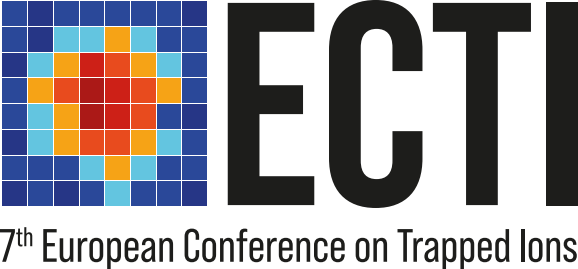Speaker
Description
Here our progress on the Ca+ ion optical clocks for the last few years will be reported, including both the laboratory clocks and the transportable clock.
A cryogenic Ca+ clock at the liquid nitrogen environment is built, with the blackbody radiation (BBR) shift uncertainty greatly suppressed, and improvements made with other systematic uncertainties, the overall systematic uncertainty of the clock is evaluated as 3.0E-18[1].
The Ca+ clock at room temperature is also improved. The systematic uncertainty of the room temperature clock was at the E-17 level, limited by the BBR shift uncertainty [2]. To lower the BBR shift uncertainty, the precise measurement of the differential scalar polarizability through of the clock transition is taken [3], and the active liquid-cooling scheme is adopted, combined with the precise temperature measurement with 13 temperature sensors [4]. The BBR field temperature uncertainty is then evaluated as 0.4 K, corresponding to a BBR shift uncertainty of 4.6E-18, then the overall systematic uncertainty of the room temperature clock is evaluated as 4.9E-18 [4].
Clock frequency comparison between the room temperature clock and the cryogenic clock is taken for testing the systematic shift uncertainty evaluations, and the two clocks show an agreement at the 10-18 level after the systematic shift corrections: With the systematic shift corrections, the frequency difference between the two clocks is measured as 1.8(7.5) × 10-18, the overall uncertainty includes a statistic uncertainty of 4.9 × 10-18 and a systematic uncertainty of 5.7 × 10-18 [4].
Besides the laboratory clocks mentioned above, a transportable Ca+ ion clock is also built, with an uncertainty of 1.3E-17 [5]. With the comparison between the transportable clock and the laboratory clock, a demonstration of geopotential measurement with clocks has been made [5]. Recently, a 35-day-long absolute frequency measurement is taken, with improvements made such as the increase of the uptime rate to 91.3 %, the uncertainty of the absolute frequency measurement is further reduced to 3.2E-16 [6].
References
[1] Phys. Rev. Appl. 17, 034041(2022).
[2] Phys. Rev. Lett. 116, 013001(2016).
[3] Phys. Rev. A, 99 011401(R)(2019).
[4] Phys.Rev.Appl. 19, 064004(2023).
[5] Phys. Rev. A, 102 050802(R)(2020).
[6] Metrologia 60, 035004(2023).

